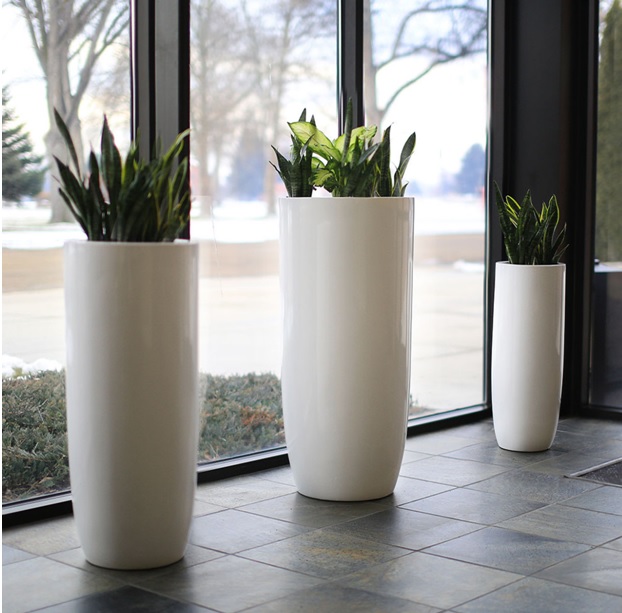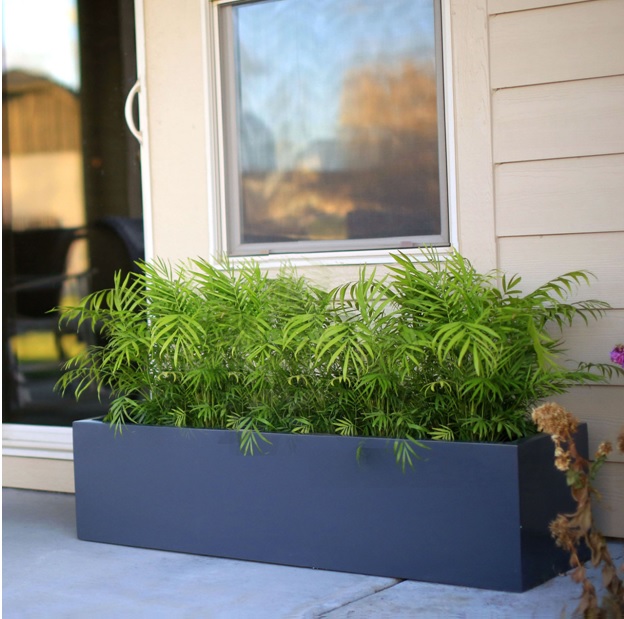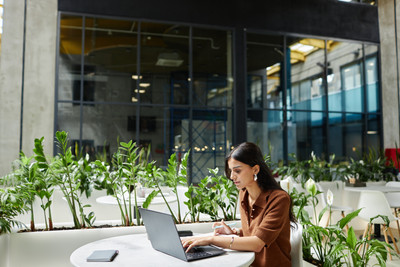A Brief Guide To Choosing The Perfect Modern Planters For Your Landscape
Posted by Jason Wyrwicz on Dec 6th 2022
Having trouble planning out or simply managing your home, compound, or business space? Or maybe you can't help but feel that there's too much concrete and not enough green to go around.
There are several ways to green up your space, including setting up a series of pots, baskets, and plant boxes around the area. However, sometimes all you really need are a couple of modern planters to really make that space feel more attuned to nature. After all, there are many benefits to adding both plants and modern planters to any living or working space.
What Are Modern Planters?
Planters are containers that are made and constructed to house different types of plants and trees around a home or office space. Basic planters usually include simple pots and baskets, as well as larger box-type containers.
A modern planter refers to the style and design of a planter box, usually ones that match and complement contemporary and urban decor. Modern planters usually also have certain features and benefits that surpass your typical pot or basket, features that can further aid in the growth and watering of plants.

What To Look For In A Modern Planter?
When you're deciding on which planter to get for your landscaping needs, there are at least three important factors that you have to take into consideration: size, material, and drainage.
Size: How Big or Small Are Planters?
Planters come in a variety of different sizes, from small ones that can fit inside your front porch, to large ones that can house moderately tall trees in front of your restaurant or office. That said, it's important to take into account the types of plants that you'll be setting up in these planters, and the space where you'll be placing the planters.
Our Tolga Modern Planters, for example, are available in lengths between 24-72 inches. While the length varies, depending on whichever you choose, the width and height remain the same at 16 and 24 inches respectively.
Of course, there are many other different sizes to different types of planters. So make sure to get the measurements of your space right to avoid over or under compensating for the space you want to fill.
Material: What Are Planters Made Of?
When it comes to plant container materials, they can be divided into three main categories. Each material comes with its own set of advantages and disadvantages. Let's explore each type.
1. Porous Materials (clay, terracotta, ceramic)
Porous materials like clay, terracotta, and ceramic planets, for example, are considered cheap. However, they tend to be heavy and prone to cracking. Their porous nature can also be problematic if you plant on setting them outdoors, especially during the winter. The freezing and thawing that happens is bound to create chips and cracks over time.
2. Nonporous Material (plastics, metals, fiberglass)
A nonporous material like fiberglass, on the other hand, is a relatively new material used for planters. Fiberglass is considered incredibly strong and flexible, perfect for the outdoors. Fiberglass is also known to be very suitable for plants, as it has waterproofing and UV protection properties. That said, fiberglass planters are considered more expensive compared to plastic and terracotta. But that extra cost is definitely worth it if you take into account the health of your plants.
3. Semi-porous (wood, pressed fibers)
Lastly, semi-porous materials like wood and pressed fibers tend to be the most lightweight of all the different materials used. Because they're natural materials, they're perfect for plant health as long as they're kept from rotting. When it comes to appearance, wooden planters are easy and pleasing on the eyes. Not to mention they have a range of styles, depending on the type of wood that's used. Wooden planters, however, usually have a lifespan of around 10-20 years, and need the occasional maintenance and checking. In terms of cost, they aren't cheap, either.
Drainage
All containers and planters usually contain holes in them. These holes are necessary to prevent plants from being steeped in water and eventually develop root rot. The holes are usually drilled on the side of the container, about half an inch from the bottom.
There are some modern planter boxes that are designed to be self-watering, and some that are designed to slowly release water into the soil to prevent overwatering. This makes modern planters easier to manage compared to traditional planters.
For smaller pots and planters, you might think that these drainage holes are an eyesore, especially if you're going for an aesthetically flawless appearance and design. In cases like these, it's possible to double-pot a plant. This usually involves the use of a cachepot, or a hidden pot that fits into a larger, more aesthetically-pleasing container. That way, you get to keep the drainage and the look you're going for both at the same time.

Which Planters Are Best Suited For Outdoors?
For outdoor planters, you want to choose materials that can best-withstand the changes in seasons and temperatures. You also want to take into account the durability of the planters you choose to display outdoors, and pick ones that are less prone to cracks, chips, and scratches.
Fiberglass planters are lightweight, have insulation, and are also able to help retain moisture, making them perfect for outdoors. They can also withstand high levels of traffic, making them suitable for hotels, restaurants, and offices.
Wood planters are also a good choice for outdoor planters. They're durable, long-lasting, and have good resistance against the weather and other natural elements.
Concrete planters are also an option if you have no plans of moving them around too much. They are excellent against cold and frost, and are highly durable and stable.
Conclusion
Now that we've covered the different factors involved in choosing the right modern planters for your space, the rest is really dependent on the size of the space you're looking to fill, and the nature of the location.
For outdoor planters, we feel that the best choice would be fiberglass planters like the Tolga Modern Planters we have available. With fiberglass being one of the more flexible, adaptable, and long-lasting options, you simply can go wrong with them.
So if you're feeling convinced that you need a fiberglass planter box, check out our website for the right size and design fit for your space.



